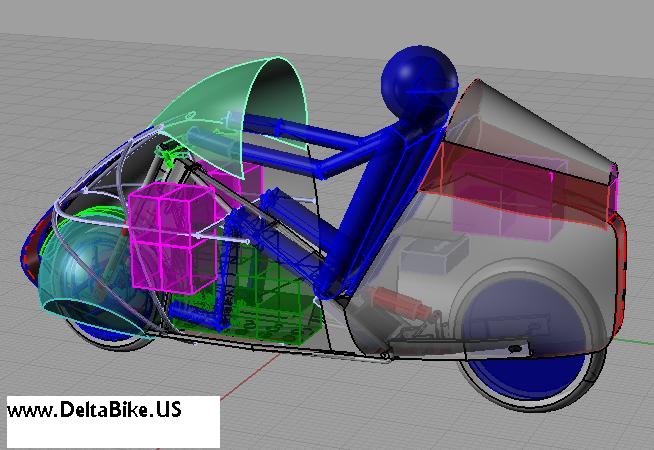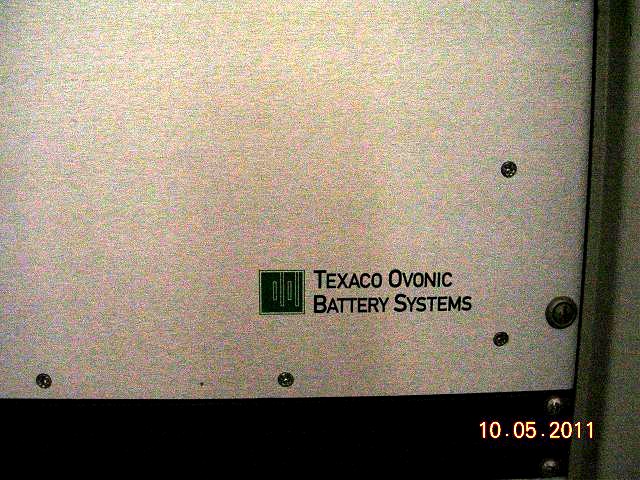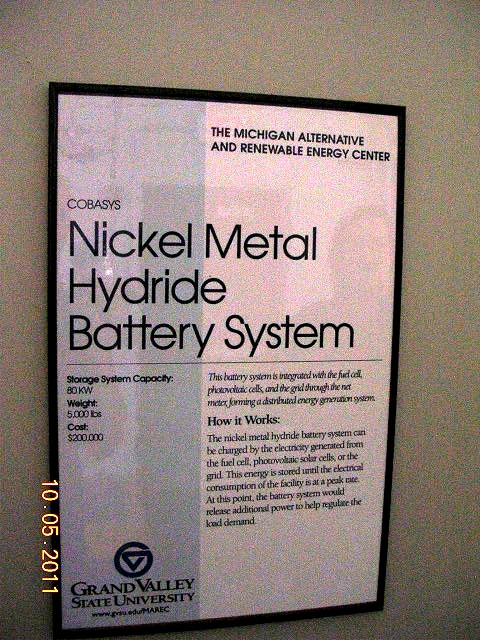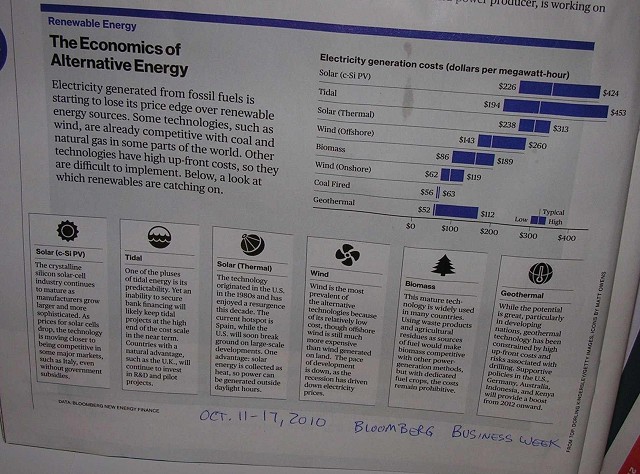|
CHAPTER 11 - The Future of Electric Motorcycles |
"When you're one step ahead of the crowd you're a genius. When you're two steps ahead, you're a crackpot." -- Rabbi Shlomo Riskin (Feb. 1998) |
|
Plans for 2011 In 2011, Schultz Engineering plans to build several prototype electric motorcycles with highly streamlined bodies to tour the Mid-west while doing durability testing.  |
|
What's next? (Plans for 2011)  Here's a concept showing the Delta-11tm loaded with 8Kw-Hrs of batteries. It can travel over 70 mph and has a projected range of over 100 miles. We are planning to attend various events in the Mid-West including Airventure 2011, Craig Vetter Fuel Economy Challenges in California and Ohio, Livionia Electric Rally. |
"In our future, transportation vehicles will change shape to conform to the driving conditions. Vehicles will stand up tall or lie down flat. They will add extra wheels or retract them. We are only limited by what we can imagine." A prediction made by Kraig D. Schultz, Founder and CEO of Schultz Engineering, LLC in the Year 2009. |
Some thoughts from Kraig Schultz, the Founder of Schultz Engineering: What am I trying to do? I am trying to design and build a highly efficient vehicle that is practical and affordable. What is the point? The point is to show that we can build vehicles that are vastly more efficient than we currently drive, and that people will buy them. Once people see that it can be done, others will follow, and this has the potential to make the world a better place. How? Gliders, experimental aircraft, human powered vehicles each have demonstrated that we can build vehicles with a Cd of less than .15, weighing less than 300 lbs. In theory, the attributes of these vehicles can be combined to make practical, safe commuter vehicles that have better performance per dollar than any vehicle in the market today. As Craig Vetter told me, "Better than a patent: Make what people want, when they want it, at a price they are willing to pay." |
Some thoughts from Stanley Ovshinsky:
|
Who killed the Electric Car? High battery costs and low oil prices. Now, we did have a low price per cycle battery available. It was the large format NiMH battery. But, that's another story. As Stan Ovshinsky told me when I asked him about the NiMH battery in the GM EV-1, "Don't become partners with someone who wants to put you out of business." I found the missing link at the MAREC center in Muskegon in the Fall of 2011. Large format Nickel Metal Hydride Batteries... Take a look at the following pictures...   |
|
Year 2011 - The Electric Vehicle Tipping Point "If you want to understand the course of human history, Follow the Money..." Kraig Schutz We are at a critical point in human history. For the first time in the last 100 years, the cost per mile for a battery electric vehicle is less than the cost per mile for a gasoline powered vehicle. In 2011, as Lithium Ion battery's go into mass production we will see the cost of battery's begin to plummet. Before 2010, the economic justifications for purchasing an electric vehicle were quite shaky. Lead Acid batterys actually had a negative pay-back, (except when comparing them to gasoline vehicles that got less than 30mpg per person). At 2010 prices for Lithium Ion battery's, several things must be true for electric vehicles to save money.
|
|
Why Go Electric? (Feb. 18, 2010) "Something that excites me about electrically driven vehicles is their simplicity. The electric drive system has 5 components. 1. Electric Motor 2. Motor Controller 3. Battery 4. Battery Charger 5. Throttle The motor typically has 1 rotating part supported by 2 bearings with over 85% efficiency and no parts to wear out... any sub-system of a gasoline powered vehicle is more complicated than this." Kraig Schultz Here are a few reasons to go electric in 2011.
How much less expensive? Well that all depends on the price of gasoline. Electricity is cheap. It costs less than 1 penny a mile to power an electric motorcycle. The most expensive thing on an electric bike is the battery. The battery is a consumable. Lead Acid batteries last between 100 and 300 charges before needing to be replaced. Lithium Ion batteries are supposed to last between 1,000-3,000 cycles. When will the price of Lithium Ion battery's come down? Mass produced, the price of most products do come down. However, if there is a shortage of raw materials used in their manufacture, and/or a supply and demand crisis... In the end, for electric vehicles to really catch on we'll need higher gas prices and lower battery prices. In the mean-time, I am happy that battery prices are high. High fuel costs force people like me to do research and development to find more ways to make vehicles more efficient. It is likely that the transition to electric vehicles will be a long, slow process. We will not run out of oil overnight. As gas prices go up, people will drive less, they will car-pool, cars will get better miles per gallon, battery prices will come down, a new battery type will be invented. . Here is a chart that shows were were are at in late 2010 for the cost of electricity production. 
|
|
(Next Chapter - The Electric Utility Bike) |
|
Inventing a better tomorrow today... The opinions and predictions on this Webpage were written by Kraig Schultz. Copyright 2010, Schultz Engineering, LLC |